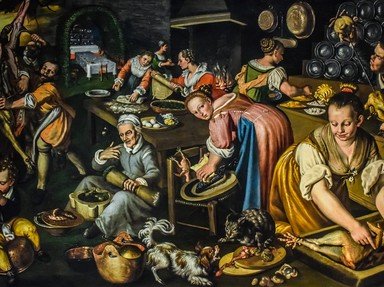Quiz Answer Key and Fun Facts
1. Which of the following does NOT characterize the International Style, popular in manuscript illuminations in early fifteenth century France?
2. In the many Annunciation scenes depicted in Northern Renaissance art, such as that in Robert Campin's Merode Altarpiece, what does the Lily symbolize?
3. Speaking of hidden symbolism, what does the Gothic architecture in Jan Van Eyck's Annunciation in a Church symbolize?
4. What is NOT one of the traditional roles the Virgin Mary plays in paintings of the Northern Renaissance?
5. In Jan Van Eyck's Arnolfini Wedding, what does his signature translate to?
6. For what building was Rogier Van der Weyden's Beaune Altarpiece (The Last Judgement) commissioned?
7. What is unusual about the composition of Hugo Van Der Goes' "Death of the Virgin"?
8. What sacrament is the central focus of Jan Van Eyck's Ghent Altarpiece?
9. Which artist was Robert Campin's pupil?
10. What is significant about Jan van Eyck's silverpoint drawing of Niccolo Albergati?
Source: Author
musettae
This quiz was reviewed by FunTrivia editor
ponycargirl before going online.
Any errors found in FunTrivia content are routinely corrected through our feedback system.

